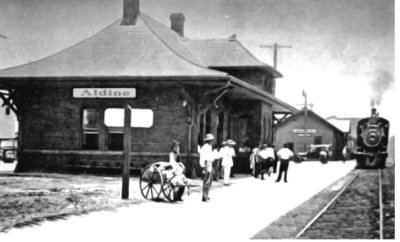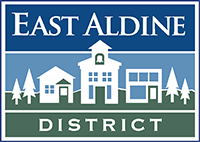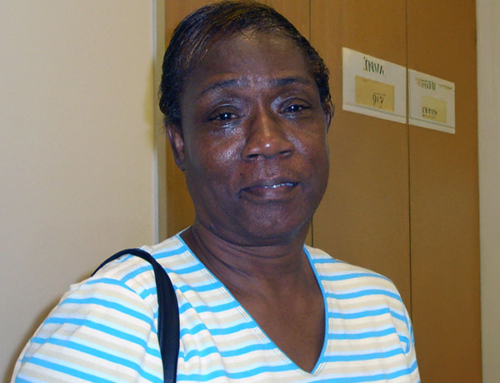 Long-time Houston journalist and professor Michael Berryhill painted an insightful picture of the East Aldine area in a 2016 article.
Long-time Houston journalist and professor Michael Berryhill painted an insightful picture of the East Aldine area in a 2016 article.
“East Aldine is a place you are born into, or drawn to. You work your way up but not out. The public schools are a source of pride and community development. Students graduate and come back to teach. People help themselves and others,” he wrote in Places Journal.
The area’s history — especially its role as home to hardworking immigrants from Germany, then Latin America and elsewhere, for more than 100 years — is a key part of its current status as a growing, business-friendly place with plenty of economic development potential.
The main focus of Berryhill’s article was the history of the nonprofit BakerRipley agency’s strong social services, including courses in how to create and grow small businesses in East Aldine.
 BakerRipley’s East Aldine facility is at the East Aldine Town Center, which the East Aldine Management District built next to the 500-acre Keith-Wiess Park. The Town Center also includes a branch of the HOPE Clinic, a three-story office building with a Sheriff’s Office storefront on the ground floor, an amphitheater where free community events are held, a playscape for children, the 911 Call Center for the Sheriff’s Department and the Lone Star College’s East Aldine campus.
BakerRipley’s East Aldine facility is at the East Aldine Town Center, which the East Aldine Management District built next to the 500-acre Keith-Wiess Park. The Town Center also includes a branch of the HOPE Clinic, a three-story office building with a Sheriff’s Office storefront on the ground floor, an amphitheater where free community events are held, a playscape for children, the 911 Call Center for the Sheriff’s Department and the Lone Star College’s East Aldine campus.
The Town Center office/community building opened in 2021 as a dream realized by community leaders.
Unfortunately, long-time board member and former chairman Gerald Overturff passed away just before the grand opening ceremony. Overturff did not always paint a bucolic picture of the land where the busy Town Center stands.
“There used to be nothing out here but pig trails,” he once observed, referring to the abundant population of feral hogs that roamed freely in the unincorporated area.
A floor-to-ceiling mural in the lobby of the office building depicts East Aldine’s colorful history and transition from the days when Overturff attended a one-room schoolhouse.
Not long after a veteran of Texas’ War for Independence, John Schlobohm settled in the area, the International and Great Northern Railroad opened a route from Houston to Palestine. “Prairie Switch,” in the Aldine area, served as the place where trains would switch engines. The railroad, now known as the Missouri Pacific, became essential for travel and shipping products to other areas.
Although there is no official record of how Aldine got its name, some historians say it stems from the railroad workers who would yell “All done!” when the train engines were switched and ready to roll.
Descendants of Schlobohm still live in the area.

A key part of Aldine’s rich history is the development of the Aldine Independent School District, which started with that one-room schoolhouse depicted in the mural.
The school district was officially created in 1935. There are nearly 65,000 students enrolled in AISD schools now.
The school district offers a variety of new educational opportunities, including an All Girls’ Preparatory Academy and the new All Boys’ Academy.
In 2009, the Aldine ISD was awarded the coveted Broad Prize, a national award that recognizes excellence in public education. The award noted that Aldine ISD closed achievement gaps between higher-income and low-income students, and commended the district for its “aggressive efforts to recruit high-quality teachers.”
A century earlier, East Aldine was primarily a rural and farming community. Attempts to establish citrus orchards were not successful in Houston’s climate, so figs became a popular crop. This inspired John C. Carpenter to open a fig cannery in 1910, which provided jobs in the area. However, sugar rationing during World War I forced the cannery to close.
Economic development in East Aldine since then has relied partly on a “service economy,” with many local restaurants and retail businesses. Warehousing and industrial services now form another part of the area’s economic backbone.
Local government has also strengthened the area with direct investments. The District has spent more than $50 million to improve water and sewer service, which includes funding from the Texas Water Development Board.
Because East Aldine is nestled between both Halls Bayou and Greens Bayou, the area has been subject to severe flooding in several historic storms. But the Harris County Flood Control District has continued to work with property owners in East Aldine to alleviate potential flooding and purchase and demolish flooded properties.
A bond issue approved by voters in 2018 includes more than $110 million for Halls Bayou watershed work, with the potential to leverage more than $346 million altogether, depending on federal funding. The management district has contributed to some of those efforts.
The district also has funded $12 million toward public safety improvements, including the funding of extra patrols by 21 Harris County sheriff’s deputies and supervisors. The District has also installed about 750 streetlights in residential neighborhoods.

In addition, the East Aldine Management District provides dozens of scholarships each year to graduating high school students and plans to provide $1,000 for each graduate of Avalos P-Tech High School, a “pathways in technology” early college high school at the Lone Star College campus at the Town Center.
In all, East Aldine grows and improves while hewing to its roots of hard work, enterprise, and loyalty to the community — thus giving it a distinct identity that is ripe for business development.
— by Anne Marie Kilday







